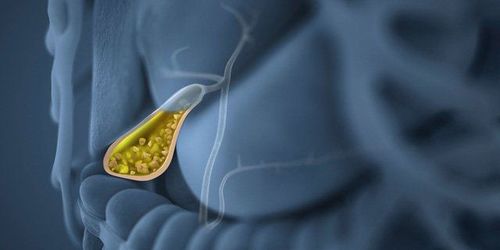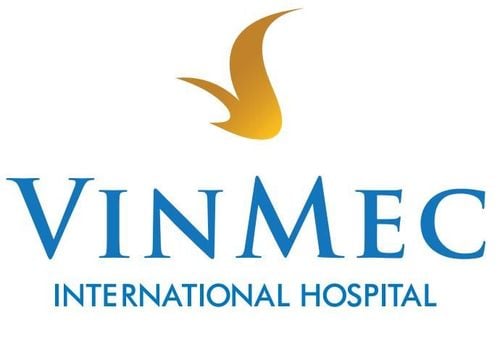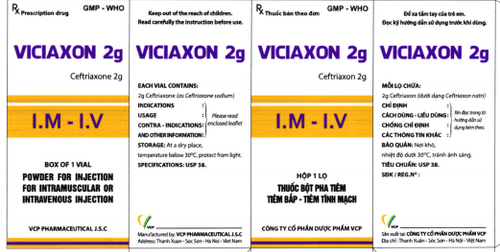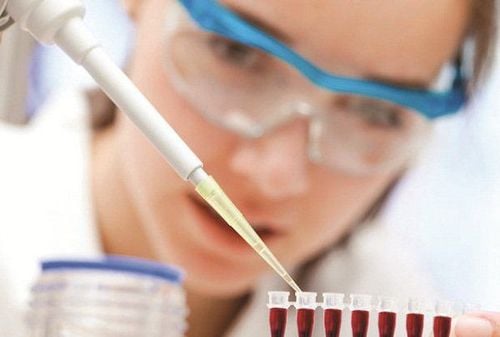This is an automatically translated article.
The article was professionally consulted by MSc Vu Van Quan - Gastroenterologist, Department of General Surgery & Anesthesiology - Vinmec Hai Phong International General HospitalMost patients with gallstones are usually asymptomatic. About 1-2% of patients with asymptomatic gallstones develop symptoms or complications each year. Once symptoms of biliary colic are present, the pain tends to recur.
1. Overview of gallstones
Gallstones are solid crystals made up of components in bile. This is one of the most common digestive problems. Most people with gallstones have no signs or symptoms for many years. But in patients who have had stones for >10 years, about one-third of them will develop symptoms caused by stones blocking the biliary tract. Prolonged stagnation of bile increases pressure in the gallbladder, leading to symptoms such as abdominal pain, which may be accompanied by some symptoms such as jaundice, high fever, vomiting ...
2. Progression and some complications of gallstones

Most patients with gallstones are usually asymptomatic. About 1-2% of patients with asymptomatic gallstones develop symptoms or complications each year. Once symptoms of biliary colic are present, the pain tends to recur.
Gallstones if "silent" are not dangerous, but if stones have caused symptoms, it is also a warning sign of complications that are happening:
Acute cholecystitis: The most common complication of stones gallbladder, characterized by inflammation of the gallbladder wall. The risk of acute cholecystitis is increased in people with large gallstones because the risk that the stone can become trapped inside the gallbladder is also increased. Typical symptoms include fever and persistent right upper abdominal pain that worsens to palpation, deep breathing, and coughing. An increased white blood cell count indicates the presence of inflammation or infection of the gallbladder. Although cholecystitis rarely causes perforation or rupture of the gallbladder, the treatment is not too difficult (with the right antibiotics and the right dose can be completely cured), but there are times when acute cholecystitis does not go away. Timely treatment can progress to more serious complications such as gallbladder necrosis, gallbladder perforation. When the gallbladder is perforated, bile will spread into the adjacent organs such as the peritoneum, causing peritoneal bile infiltration, more severe biliary peritonitis, septic shock of the biliary tract ... even leading to death. Chronic cholecystitis: This is a chronic inflammation of the gallbladder. When chronic cholecystitis, long-term thickening and fibrosis of the gallbladder wall will completely lose the function of concentrating and storing bile. Mirizzi syndrome: Occurs when a stone from the cystic duct or in the neck of the gallbladder presses on the adjacent bile duct, causing partial or complete compression of the common hepatic duct and causing biliary obstruction. The disease causes jaundice, recurrent biliary tract infections. In the late stage, the stone erodes the neck of the gallbladder, causing a leak of the gallbladder - common bile duct. Intestinal gallstones: When the gallbladder is perforated, gallstones can pass through the perforation into the small intestine. If a large gallstone falls into the intestinal tract, it may become blocked in the ileocecal valve (or ileocecal valve, a sphincter located at the junction of the small intestine and large intestine), causing erosion of the small intestine wall. At that time, the waste products of the body can clump together, forming a stone at the site of injury. Large stones can cause a blockage in the intestines called gallstones. And intestinal obstruction, regardless of cause, is a serious emergency of gastrointestinal surgery.

Gallstones can also migrate from the gallbladder into the biliary tract. Patients with stones in the biliary tree, if not causing biliary obstruction, are usually asymptomatic. But when a stone blocks the bile duct, it will also cause severe pain (bile colic) and have complications such as: Obstructive jaundice: When the stone blocks the bile duct, obstructing the flow of bile into the duodenum In the colon, bile pigments are not released into the intestinal tract, leading to increased levels of bilirubin in the blood (mainly conjugated bilirubin). Without proper treatment, as bilirubin levels continue to rise, Bilirubin can seep into nerve tissues causing toxicity. Clinical manifestations are symptoms such as biliary colic accompanied by jaundice, dark urine, pale stools and itching. Biliary tract infection: A bacterial infection of the bile ducts in the bile ducts formed when the flow is obstructed or reduced due to gallstones. can cause high fever, chills, sometimes lead to life-threatening sepsis. Acute pancreatitis: The stone moves to the ampulla of Vater (where the common bile duct and the main pancreatic duct converge before emptying into the 2nd part of the duodenum) and becomes stuck there. Then it not only causes biliary obstruction, but also obstructs the main pancreatic duct. Pancreatic enzymes (with a full range of digestive enzymes capable of digesting most foods) are normally in an inactive form before entering the duodenum, but because they are not poured into the gastrointestinal tract, they are activated. becomes the active form right in the main pancreatic duct, digesting the pancreatic parenchyma itself, causing acute pancreatitis, which is a very serious medical emergency, which can continue to develop into many other serious complications, even threat of multiple organ failure and death. Gallbladder cancer: Many cases are developed from perennial gallstones and chronic cholecystitis. Patients often have no symptoms until cancer develops, and are diagnosed incidentally after cholecystectomy. It can be said that gallstones need to be detected and treated early to help treat the disease effectively and avoid serious complications caused by stones. To help protect customers' health in a comprehensive way, Vinmec International General Hospital has launched Hepatobiliary Screening Packages with different levels of intensive screening, depending on the specific needs of the patient. diseases, help customers assess liver function, comprehensive bile, perform tests to help detect liver and bile problems at the earliest, from which the doctor will give appropriate treatment advice.
Screening results are guaranteed to have the highest accuracy when performed by a team of highly qualified and experienced medical doctors; modern and advanced technological equipment; Professional quality service, methodical.
Please dial HOTLINE for more information or register for an appointment HERE. Download MyVinmec app to make appointments faster and to manage your bookings easily.














